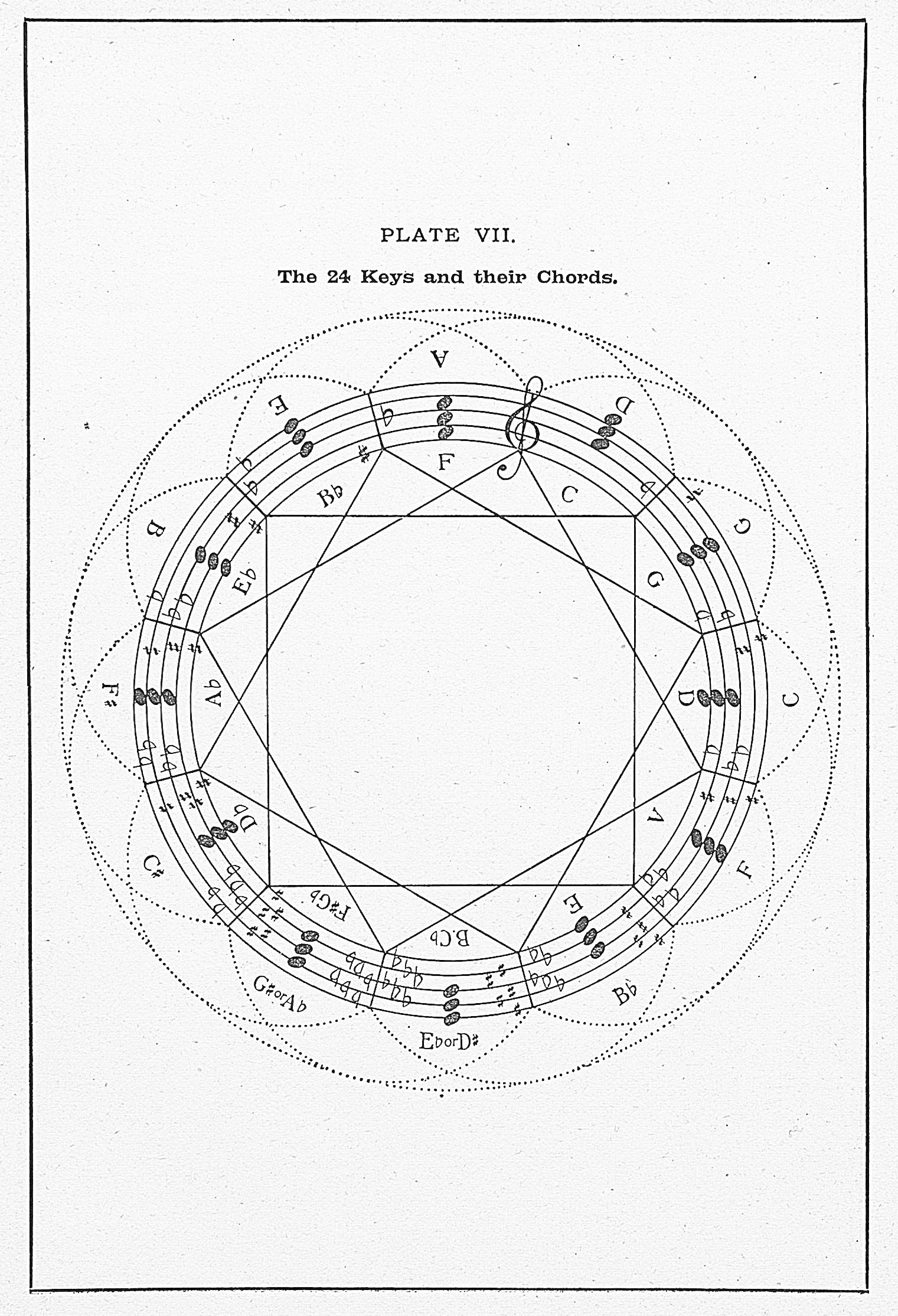
The Plate shows the Twelve Major and Minor Scales, with the three chords of their harmony - subdominant, tonic, and dominant; the tonic chord being always the center one. The straight lines of the three squares inside the stave embrace the chords of the major scales, which are read toward the right; e.g., F, C, G - these are the roots of the three chords F A C, C E G, G B D. The tonic chord of the scale of C becomes the subdominant chord of the scale of G, etc., all round. The curved lines of the ellipse embrace the three chords of the successive scales; e.g., D, A, E - these are the roots of the three chords D F A, A C E, E G B. The tonic chord of the scale of A becomes the subdominant of the scale of E, etc., all round. The sixth scale of the Majors may be written B with 5 sharps, and then is followed by F with 6 sharps, and this by C with 7 sharps, and so on all in sharps; and in this case the twelfth key would be E with 11 sharps; but, to simplify the signature, at B we can change the writing into C, this would be followed by G with 6 flats, and then the signature dropping one flat at every new key becomes a simpler expression; and at the twelfth key, instead of E with 11 sharps we have F with only one flat. Similarly, the Minors make a change from sharps to flats; and at the twelfth key, instead of C with 11 sharps we have D with one flat. The young student, for whose help these pictorial illustrations are chiefly prepared, must observe, however, that this is only a matter of musical orthography, and does not practically affect the music itself. When he comes to the study of the mathematical scales, he will be brought in sight of the exact very small difference between this B and C?, or this F# and G?; but meanwhile there is no difference for him. [Scientific Basis and Build of Music, page 108]
Nature does give us the chromatic scale of 12 semitones, but she does so by a very different process.
We have, however, to thank Euler, perhaps, for starting the genesis of the scale from F instead of C, which he does without assigning any reason for it, and, it seems without seeing the deep significance of it; and since he does this as a mere matter of course, it would be interesting to know if he had not seen F thus used by some other, it may be some obscure genius who had insight to discern, more than push to put forth his finding - a case in which the world has doubtless sometimes been a loser. - Editor. [Scientific Basis and Build of Music, page 108]
See Also
Ramsay - CHAPTER IX - CHORDS
Ramsay - Various Musical Orthography for Uniform Musical Essence
